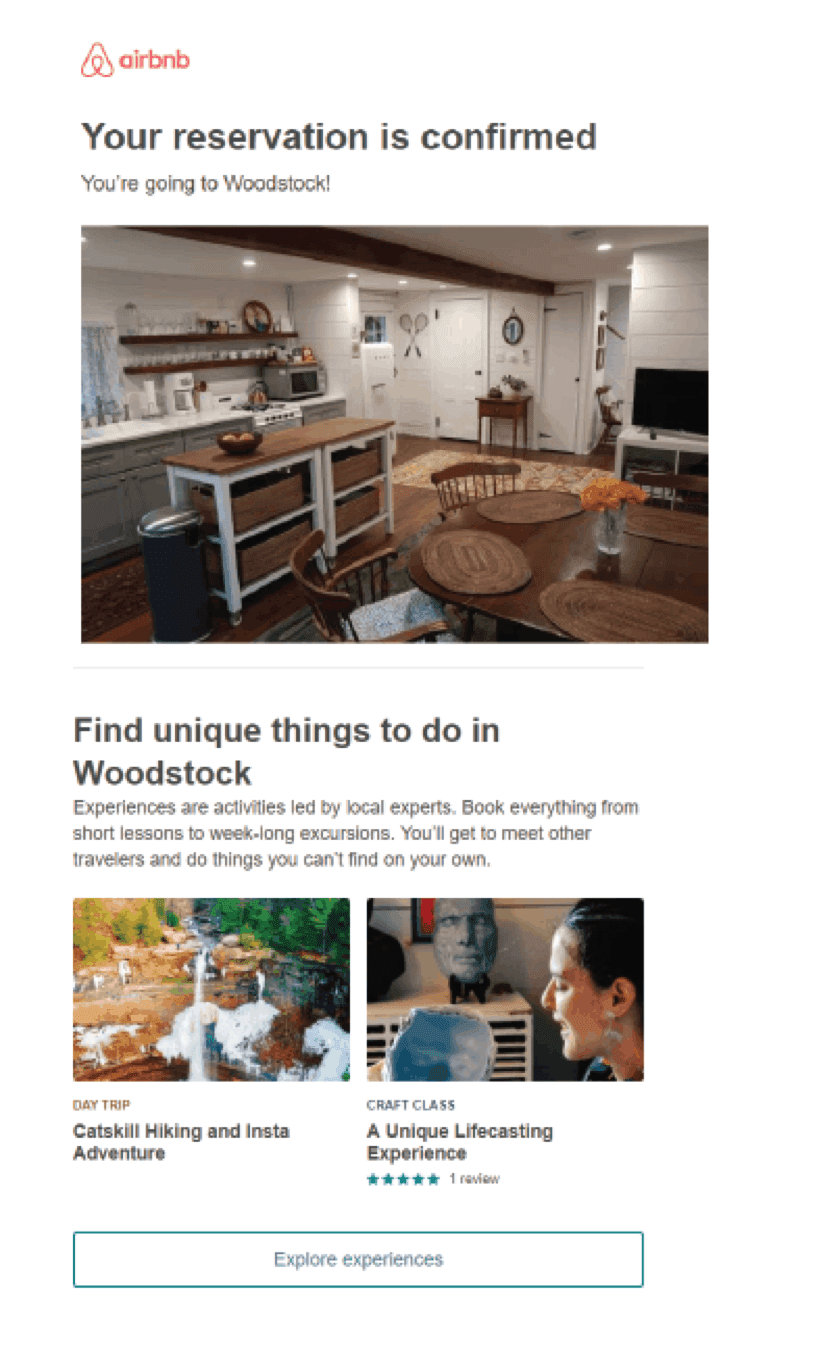


Trigger emails reliably perform well across industries, yet they continue to be completely underutilised.
Trigger email metrics consistently outperform business-as-usual (BAU) emails, yet these types of emails typically account for less than 5% of all delivered emails in any quarter. Your brand may be missing opportunities to use trigger emails.
When people take an action, like purchasing an item on your website, trigger emails provide a response, like a confirmation email. But trigger emails should also happen earlier in the journey when people abandon their cart or browser.
Abandon cart and abandon browser emails, in particular, keep your brand top of mind with the customer, even if they’re jumping around on different websites, apps and emails during their day.
Getting your email subscribers’ attention is crucial in an era of insane inboxes. Of all emails deployed in Q4 of 2018, 82% of emails were categorised as “marketing messages,” which means there is a lot of competition within the channel.
Trigger emails are one way to get your subscribers to click.
People tend to open trigger emails because they’re delivered based on specific actions a person has taken with your brand, which means they are highly relevant.
And the numbers don’t lie: Triggered responses are increasing. Trigger email open rates were 76% higher than BAU in Q4 2018, and trigger click-through rates more than doubled BAU.
These high engagement rates highlight the fact that trigger emails are critical to your email strategy because today’s email content needs to be tailored to individuals. They deliver personalised campaigns and real-time messages to every customer— each one built for an inspiring inbox experience.
Whether you already have a trigger email strategy in place or you’re just getting started, keep some of these tips in mind.
1. Help people move through the buying journey
Email marketing consistently has a high ROI, making it an ideal channel to encourage customers to continue on their journey with you. An abandon browser email is one way to bring potential customers from consideration toward purchase.
One example is to send a trigger email a few hours after the browser is abandoned with the products that the individual viewed along with an enticing headline. You can also provide additional information, such as the option to pick up the items in store, which they may not have known was available, so it’s easier to hit “buy now.”
2. Don’t forget to say “Hi”
It’s a simple, but too easily overlooked part of your email strategy: Always welcome your newcomers.
In many ways, this should be the first trigger email you set up as it sets the tone for all other communications from your brand moving forward. It shows what kind of business your new customers have a relationship with and gives you a chance to highlight the many benefits of receiving email communications from your brand.
This is especially important for loyalty and rewards programs. Whole Foods, for example, has a series of welcome emails for newcomers to their My 365 Rewards programme.

The initial welcome email highlights the perks of membership, all shared in a light, conversational tone.
3. Use the profile information you already have
Trigger emails can give your email subscribers a better customer experience. While you may not always be moving people toward making a purchase, you can continue to retain and nurture them based on their preferences and provided profile information.
For example, an online pet shop can set up a trigger email based on the information they receive about the subscriber’s pet. Take it a step further by including the pet’s name and asking what other products and services could be relevant for them. This helps you to build out the customer profile while also showing that you care about their pet.
4. Showcase other related products and services
Your trigger email approach may be pretty standard, but what if you can give the recipient a little something extra? These emails are an opportunity to add on to their experience based on their interests.
For example, when Airbnb sends a confirmation email, they tend to include a section to book fun activities in the area, like local hiking or crafting classes. These offers are highly relevant since people are often looking for unique adventures at their destination.

This is a useful option for B2B marketers too. You can use an auto-responder email from a downloaded report to recommend other content people may be interested in reading.
5. Keep it conversational
Your customers are busy people, and nurturing their relationship with your brand is probably not at the top of their to-do list. By opening up a dialogue with your customers at an appropriate time, you can do the heavy lifting for them.
One way to make a conversation with your customers is to ask for their feedback on the products they recently ordered. People will still find this relevant since it relates to a purchase they made, and they’ll get a chance to give their opinion. This will also give you more information on the products they like (or don’t like).
As you can see, there are many ways to incorporate trigger emails into your contact strategy without feeling forced or random.
Let your customers’ actions open the door to their journey with you. You can be there, ready to respond to them with the appropriate next communication.